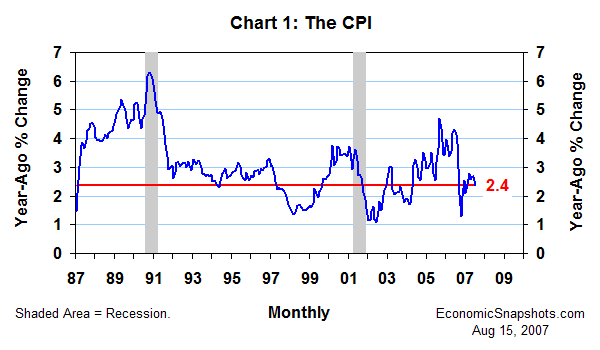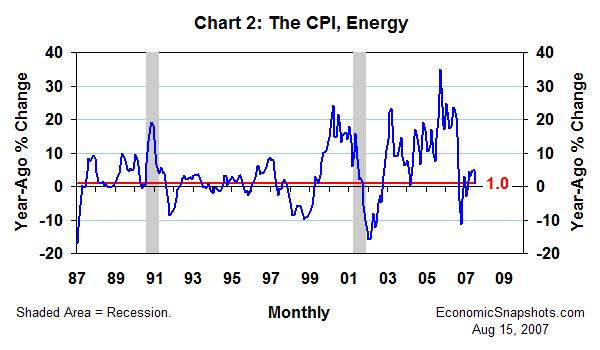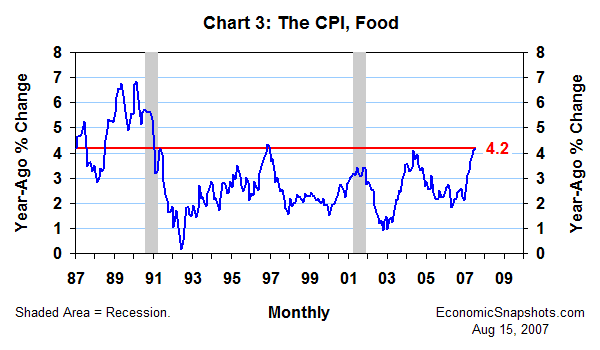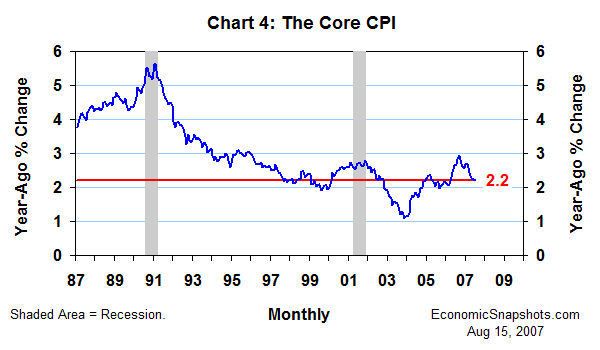
| Back to Index |
Aug 15, 2007 – The U.S. consumer price index (CPI) edged up by 0.1% in July after a 0.2% increase in June. July marked the second month of more restrained CPI growth. From March through May, CPI growth averaged an unusually high 0.6% per month.
Compared to the same month last year, the CPI rose by 2.4% in July (Chart 1). In June, this twelve-month increase was 2.7%.

Lower energy prices were the key factor slowing CPI growth in the last two months. Consumer energy prices fell by 1% in July after a 0.5% June decline. Based on the gasoline price data for the first two weeks of August, we might see an even larger decline in energy prices in the August CPI. From March through May, energy price growth averaged a huge 4.6% per month.
Compared to the same month last year, the consumer energy prices rose by a relatively weak 1% in July (Chart 2). However, with three straight years of double digit growth through July last year, the level of consumer energy prices remained relatively high in July.

In contrast to energy, consumer food prices continued on a strong upward trend – up by 0.3% in July after a 0.5% increase in June.
Compared to the same month last year, food prices rose by 4.2% in July (Chart 3). That was the biggest twelve-month rise in food prices since a 4.3% increase in February 1996.

In his semi-annual testimony last month, Fed Chairman Bernanke argued that, because food and energy prices are so volatile, core inflation (which excludes food and energy prices) is a better indicator of the economy’s underlying inflation trend.
The core CPI rose by 0.2% in July, matching its June increase.
Compared to the same month last year, the core CPI rose by 2.2% in July (Chart 4).

This twelve-month trend in core CPI growth reached a peak of 2.9% in September last year. For the last three months, it has been running steady at 2.2%.
Bottom line: it’s debatable whether inflation was still on a slowing trend in July, but it didn’t seem to be increasing.
Suzanne Rizzo